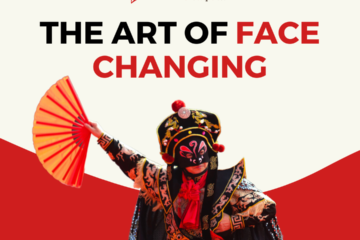Hebei Province, referred to as its one-character abbreviation “冀” (Jì), is located in Northern China. Geographically speaking, it is situated in a very strategic position that gives her the role of “gateway to the outside of the Capital”: in fact, Hebei province is part of the Beijing-Tianjin-Hebei agglomerate, one of China’s major industrial poles. The provincial capital, and largest city, is Shijiazhuang, with its 10 million inhabitants.
Despite being a symbol of China’s industrial modernity, Hebei’s splendor actually dates back to the Kingdom of Yan and Zhao during the Spring and Autumn period and the Warring States period, much before China was firstly united under a sole reign; today, Hebei Province is China’s major grain cotton producer and one of the largest fruit-growing areas.
The industries mainly include coal, steel, ceramics, textiles and pharmaceuticals. Handan City (邯郸市) and Tangshan City (唐山市) are the two largest porcelain capitals in the north.
Thanks to its strong industrial presence, the province houses many of the largest industrial companies of the country.
Hebei Iron and Steel Group (河钢集团) is the largest steel producer in China. North China Oilfield (华北油田) is instead one of China’s important oil producing areas. The largest antibiotic production base in China (and East Asia) is the North China Pharmaceutical Factory, situated in Shijiazhuang.
Lucky Film Factory in Baoding is currently the only manufacturer in developing countries that can develop and produce color films on its own. Hebei Province is also developed in the agricultural field, being wheat, cotton, maize and cashmere important producer.
According to 2016 statistics, there were 3.57 million ethnic minorities in Hebei Province, accounting for 4.8% of the province’s total population of 75.2 million, ranking 9th in China. Officially recognized ethnic groups as the Manchu , Mongol , Hui and Zhuang: the Manchu population is about 2.3 million (3.18%), ranking second in China. Hebei also counts & autonomous counties, three ethnic counties and 54 ethnic townships.
This diversity reflects perfectly a diversity in religions: The main religions in Hebei are Chinese folk beliefs, Taoism and Buddhism . According to surveys conducted in 2007 and 2009, 5.52% of Hebei’s population has ancestor worship and 3.05% of the population are Christians: the province has the highest concentration of Catholics in the People’s Republic of China, with nearly 1 million Catholics in the province.
Credits to: Chiara Tenneriello & Silvia Gramegna



0 Comments